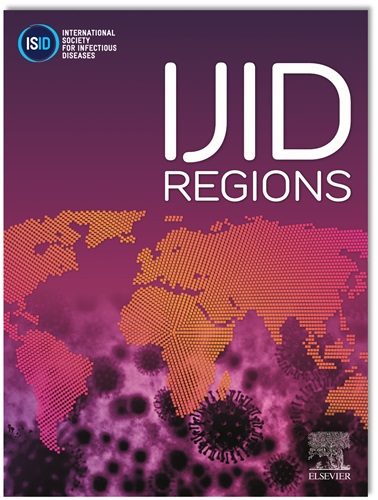机器学习用于HIV、梅毒、淋病和衣原体的个性化风险评估:系统回顾和荟萃分析。
IF 4.8
2区 医学
Q1 INFECTIOUS DISEASES
引用次数: 0
摘要
背景:机器学习(ML)显示出对性传播感染(STI)风险预测的希望,但其有效性的系统证据仍然是碎片化的。方法:系统检索6个电子数据库、3个预印本档案和会议论文集(2010年1月- 2024年4月)。研究报告了基于监督ml的STI风险预测模型的定量绩效指标。我们使用双变量随机效应模型来估计合并敏感性、特异性和曲线下面积(AUC)。使用PROBAST工具评估偏倚风险。我们用完整的和重建的混淆矩阵对研究进行了顺序分析。亚组分析和元回归探讨了异质性的潜在来源。结果:在筛选的3877项记录中,25项研究包括45种独特的模型符合纳入标准。对于HIV,对具有完全混淆矩阵的研究(7项研究,9个列联表)的分析显示,总AUC为0.91 (95%CI:0.88-0.93),合并敏感性为0.84(0.76-0.90),特异性为0.84(0.70-0.93)。亚组间存在大量异质性(I²>98%)。对于其他性传播感染,个别研究报告的auc范围为梅毒的0.75-0.87 (n=5),淋病的0.73-1.00 (n=6),衣原体的0.67-1.00 (n=6)。讨论:虽然ML模型表现出良好的性能,特别是对HIV,但显著的异质性使解释复杂化。未来的研究应优先考虑外部验证、标准化指南和多中心稳健实施研究来评估临床影响。本文章由计算机程序翻译,如有差异,请以英文原文为准。
Machine learning for personalized risk assessment of HIV, syphilis, gonorrhoea and chlamydia: A systematic review and meta-analysis
Background
Machine learning (ML) shows promise for sexually transmitted infection (STI) risk prediction, but systematic evidence of its effectiveness remains fragmented.
Methods
We systematically searched six electronic databases, three preprint archives and conference proceedings (January 2010-April 2024). Studies reporting quantitative performance metrics for supervised ML-based STI risk prediction models were included. We used a bivariate random-effects model to estimate pooled sensitivity, specificity and area under the curve (AUC). The risk of bias was assessed using the Prediction model Risk of Bias Assessment Tool. We conducted sequential analyses of studies with complete and reconstructed confusion matrices. Subgroup analyses and meta-regression explored potential sources of heterogeneity.
Results
Among 3877 records screened, 25 studies comprising 45 unique models met inclusion criteria. For HIV, analysis of studies with complete confusion matrices (7 studies, 9 contingency tables) demonstrated summary AUC of 0.91 (95% CI: 0.88-0.93), pooled sensitivity 0.84 (0.76-0.90) and specificity 0.84 (0.70-0.93). Substantial heterogeneity persisted across subgroups (I² > 98%). For other STIs, individual studies reported AUCs ranging from 0.75-0.87 for syphilis (n = 5), 0.73-1.00 for gonorrhoea (n = 6) and 0.67-1.00 for chlamydia (n = 6).
Discussion
While ML models show promising performance, particularly for HIV, significant heterogeneity complicates interpretation. Future research should prioritize external validation, standardized guidelines and multi-centred robust implementation studies to evaluate clinical impact.
求助全文
通过发布文献求助,成功后即可免费获取论文全文。
去求助
来源期刊
CiteScore
18.90
自引率
2.40%
发文量
1020
审稿时长
30 days
期刊介绍:
International Journal of Infectious Diseases (IJID)
Publisher: International Society for Infectious Diseases
Publication Frequency: Monthly
Type: Peer-reviewed, Open Access
Scope:
Publishes original clinical and laboratory-based research.
Reports clinical trials, reviews, and some case reports.
Focuses on epidemiology, clinical diagnosis, treatment, and control of infectious diseases.
Emphasizes diseases common in under-resourced countries.

 求助内容:
求助内容: 应助结果提醒方式:
应助结果提醒方式:


